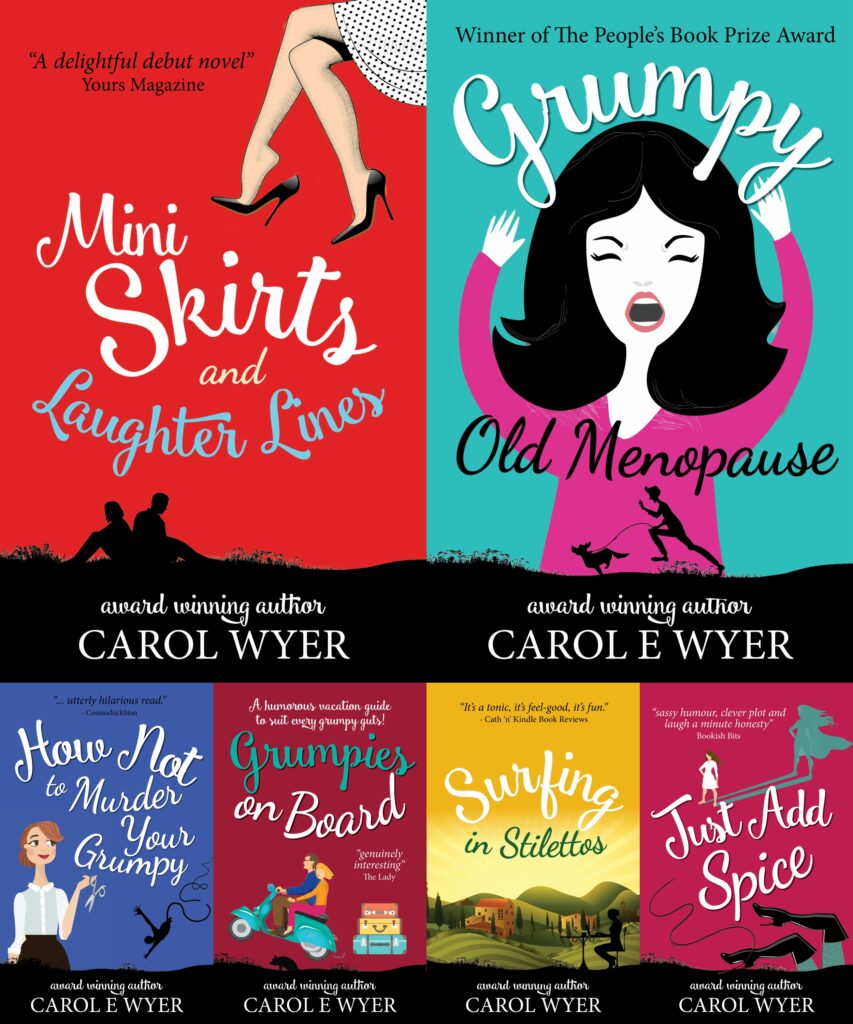As an indie author, it's your prerogative to do things your way, including choosing the cover design for your self-published book. While trade-published authors often dislike the covers picked by their publishers, that doesn't mean their publishers have got it wrong. Though it may seem that all book covers in a particular genre start to look the same (take the trend for headless women on historical novels a few years ago, for example), trends are followed for good reason, and you flout them at your peril. Designer Aimee Coveney explains why it's important to strike the right balance between pleasing yourself and conforming with common practices in your genre.
As a self-publishing author, there is one benefit which I believe gives authors a pre-conceived satisfaction, and that’s the control that they have on how their book will look in their hands at the end of the process. For many authors this is something they have dreamed of for a very long time. As a book design professional, it can sometimes be difficult to express to authors why the cover that they have visualized in their mind may not the best option.
Should You Dare to be Different?
Often the first thing a professional will hear from an author is that they want the cover to be completely different from other books on the market. Most book cover designers will tell you that this can be fatal to a book’s selling potential. This is where professional book cover designers prove their worth. They’re not just graphic designers; they should research the elements of a cover and what is working in particular areas of the market on a regular basis. The trends that are set and followed can mean the difference between your book selling or being looked over by a reader.
With this being the case, there is a fine line between being different and risking that vital connection between your book and your chosen target market.
This is because readers are naturally drawn to books that have a familiar appearance and brand to those that they have previously enjoyed.
The Disadvantage of Difference
If your book has a very different cover, you may lose out on those sales from readers who are looking for a particular style of work. Many publishers, agents and designers insist on using the tried and tested styles of design, only testing the waters with a new trend once they know it will pick up sales. This can be frustrating for self-publishing authors who rightly feel that their work deserves to be noticed, but ironically, being different can mean your book isn’t noticed as much as it could be.
Blend In, But Don't Camouflage
Having said this, there is also a risk that your book will blend in too much and the design may appear dull. There are, however, ways that you or your designer can make your cover stand out whilst still creating a sense of credibility through familiarity within your position in the market.
- Take some time to look through books in your genre. What covers stand out to you and why?
- What is selling well and gaining notice?
- You can also look at other genres, as trends often find themselves crossing over.
Once you have accumulated some detail, use this information to cleverly better the themes and styles that have proved themselves successful. The elements to focus on can include colours, imagery, mood, typography and composition.
Get the Balance Right
Cover design is a true balancing act and something to take great care and consideration over. At the end of the day, the cover is there to perform one job, and that is to appeal and sell to your readership. Achieving this can take some thought, but there are certainly ways to make your work appeal to the genre’s regular readers, whilst standing out for the right reasons.
When choosing a book cover design, should indie authors dare to be different? Advice from @AuthorDesigner Share on XIf you and your designer have an idea that breaks the mould, that you both feel could work then it can be worth trying to become the trendsetter, but if you don’t, there is nothing wrong with balancing familiarity and uniqueness, trusting in the market and in your readers.
And Finally…
As further food for thought, here are the four winning covers from ALLi's Cover Design Competition, which ran during our Indie Author Fringe conference last month, generously sponsored by Kobo Writing Life and Nuance, providers of Dragon recognition software. For more details, visit the post about the results here.
For more information on how to find the perfect book cover, see ALLi's Ultimate Guide to Finding the Perfect Book Cover











[…] Book Marketing: Choosing the Cover for your Self-Published Book – Follow the Crowd or Dare to … […]
What are your goals as an author? Do you want to sell a lot of books? If so, you can’t take the cover design lightly. Invest in professional help and be open to different ideas.
[…] Mark Dawson Find Out More About Mark Dawson’s FB Ads Course Abigail’s company 7th Titan Press Cover Judgement Think Before You Link Email Spreemail The Artist Formerly Known as Imprints Stumbling in the Dark […]
[…] Source: Book Marketing: Choosing the Cover for your Self-Published Book – Follow the Crowd or Dare to … […]
I once saw a traditionally published book sporting a cover which was obviously a painting depicting the Fellowship of the Ring. The book might have been good, but I went into it with a set of assumptions and expectations that the author (who’s a very successful fantasy writer) had no hope of meeting. Recently, Guy Gavriel Kay has been tweeting laughable covers of his books as published overseas. I’m not convinced the professionals are always making the best decisions, either.
[…] Aimee Coveney As an indie author, it’s your prerogative to do things your way, including choosing the cover […]
MARKETING! The cover of a book is the 1st visual contact with a possible reader. It should be a Billboard that promises what what will be inside, and lures the seeker of the genre to turn pages and look further into a chapter, or two… and purchase. The cover for my e-book “Body Scavengers”, is a successful example. Designer’s job is to create the best attractive cover for the proper genre, in accord with the author’s and the marketer”s final decision. .
As a disabled fiction writer funds dictate every facet of my life.
Professional editing services, graphic designers and Pay per click programs all have one goal in mind…$$$$$!
I am comfortable doing what I am doing regarding my eBook covers.
Nothing in life is guaranteed and that includes the world of independent authors.
Everything is built around a readers perception of a book, from it’s cover to contents.
One can only do their best and hope for the best I feel.